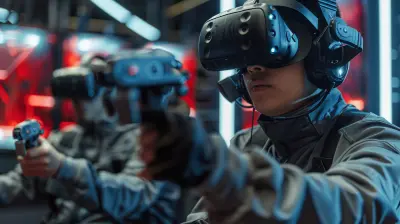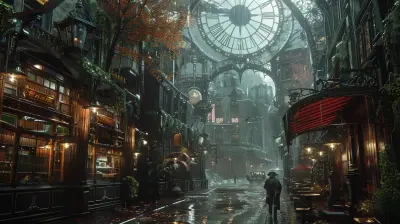The Growing Intersection Between VR and Augmented Reality in Games
10 September 2025
The gaming world is changing faster than you can say “level up.” One of the most exciting shifts is the growing intersection between Virtual Reality (VR) and Augmented Reality (AR). If you’ve been anywhere near the tech or gaming scene in the past few years, you’ve probably heard these buzzwords thrown around. Maybe you've even tried on a VR headset or caught a Pokémon using AR on your phone. But now, these two worlds are starting to blend — and it’s shaping the future of gaming in ways we never imagined.
Let’s dive into this awesome merger of VR and AR and see what it means for gamers, developers, and the future of digital play.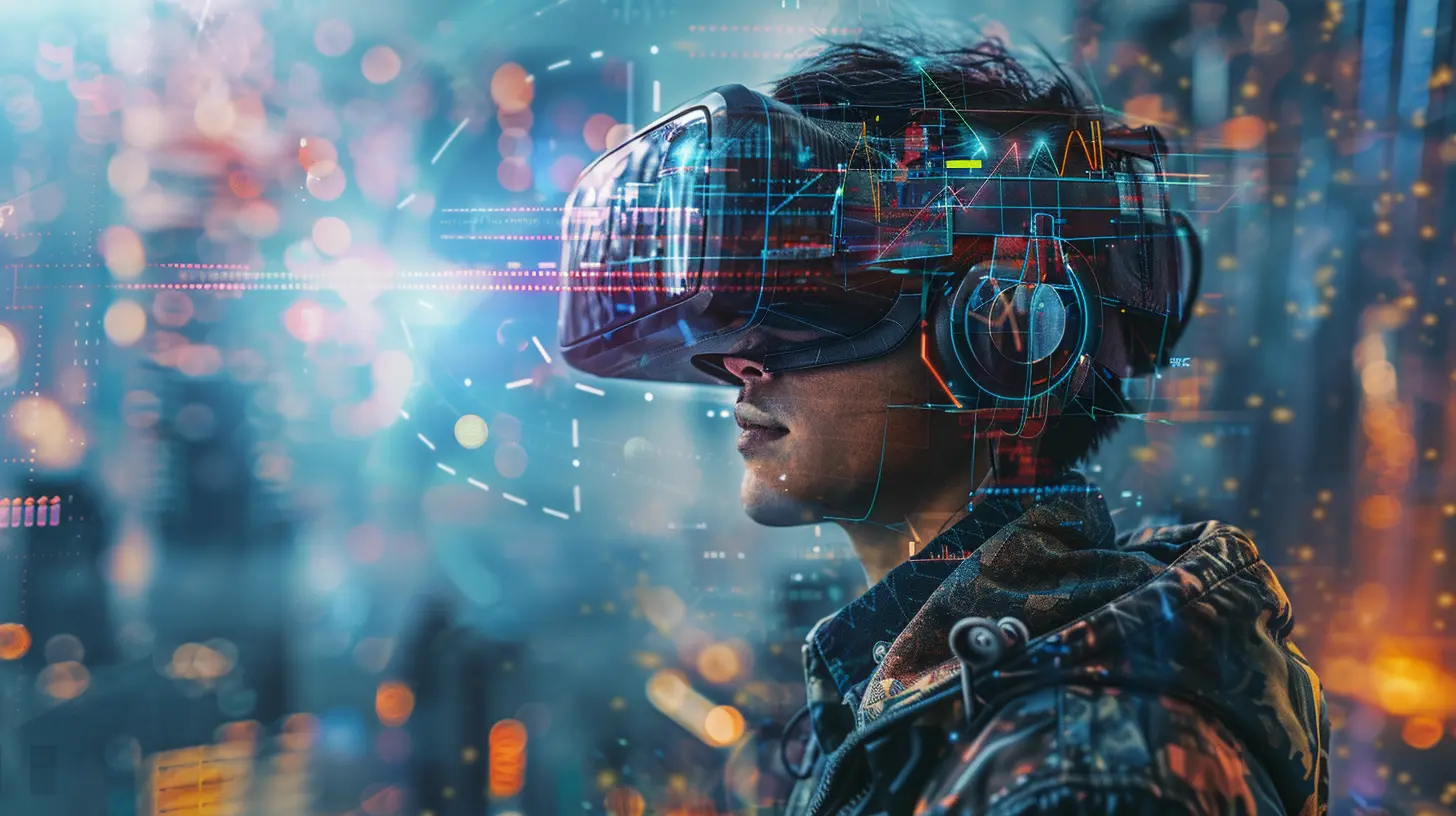
What’s the Difference Between VR and AR?
Before we mash them together, let’s quickly break down what VR and AR are.- Virtual Reality (VR): Imagine slipping on a headset and being whisked away to another world. You're not in your room anymore—you're on a spaceship, a battlefield, or exploring an enchanted forest. Everything around you is computer-generated. That’s VR in a nutshell.
- Augmented Reality (AR): AR is more like adding digital sprinkles to your real-world cupcake. You're still in your own space, but virtual elements are placed over it. Think Pokémon Go—you're walking down the street, and Pikachu is chilling on the sidewalk.
So, VR replaces your environment, and AR enhances it.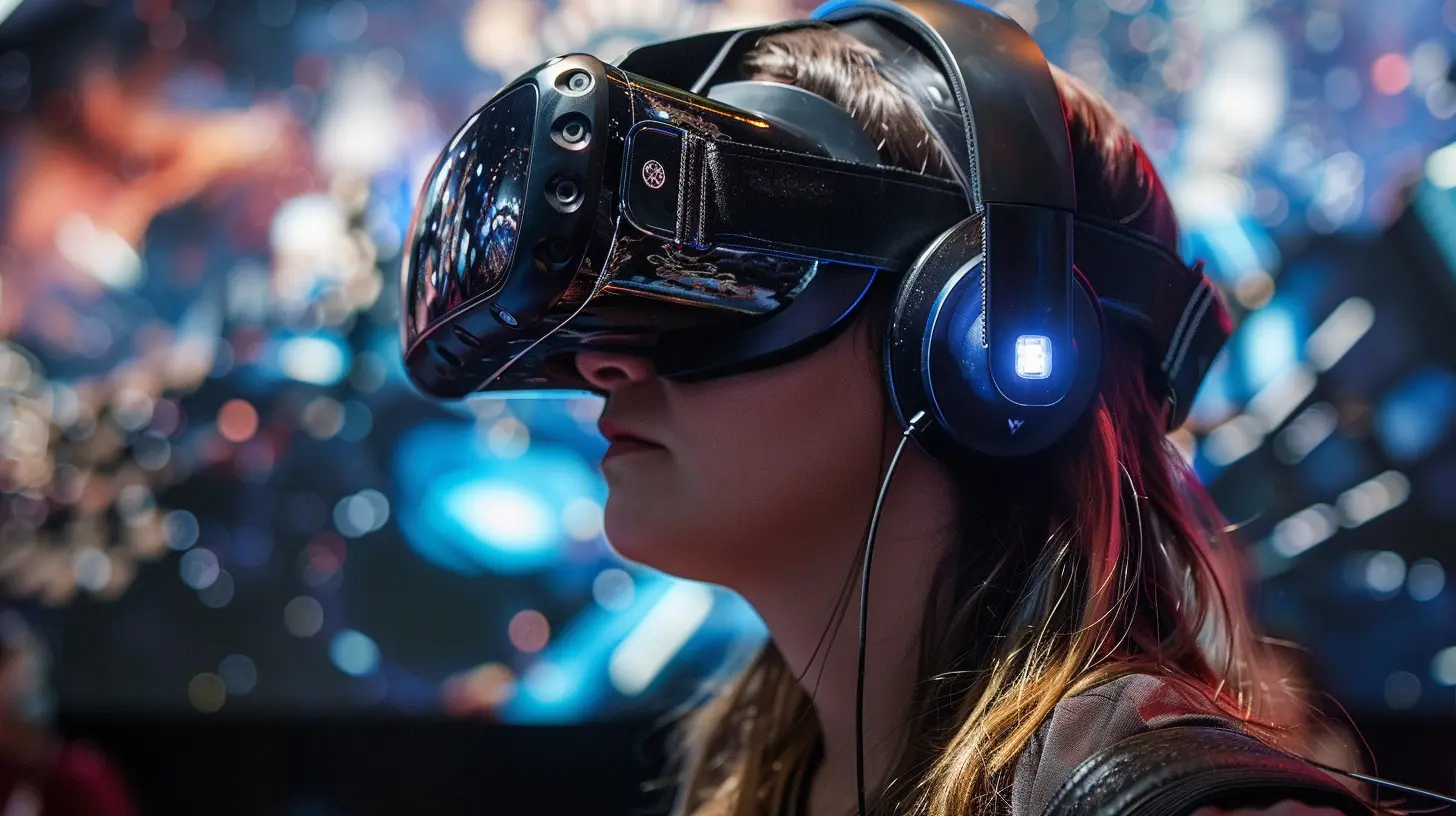
Why Are VR and AR Coming Together?
That’s the million-dollar question. The short answer? Because together, they create something even cooler.Gamers want more immersion and interactivity. And developers? They want to push the limits of what technology can do. Blending VR and AR — sometimes called Mixed Reality (MR) or Extended Reality (XR) — is opening doors both sides never thought possible.
Imagine playing a game where you’re dodging laser attacks in your living room (like AR), but you’re fully geared up with a headset that makes it feel like a digital battlefield (like VR). Combining both gives you the best of both worlds.
The Evolution of Immersive Gaming
Just a few years ago, VR felt like a gimmick. Remember those clunky headsets and glitchy demos? Yeah, not exactly “next-gen.” Meanwhile, AR was just starting to creep into mainstream mobile apps.Fast forward to now: VR and AR tech have improved big time. Graphics are sharper, sensors are smarter, and devices are way more comfortable.
Games have stepped up too. Titles like Beat Saber and Half-Life: Alyx showed what VR gaming really could be. At the same time, AR apps like Pokémon Go and Minecraft Earth showed us how fun it is to bring digital elements into the real world.
Now, developers are mixing the two into beautiful, groundbreaking experiences.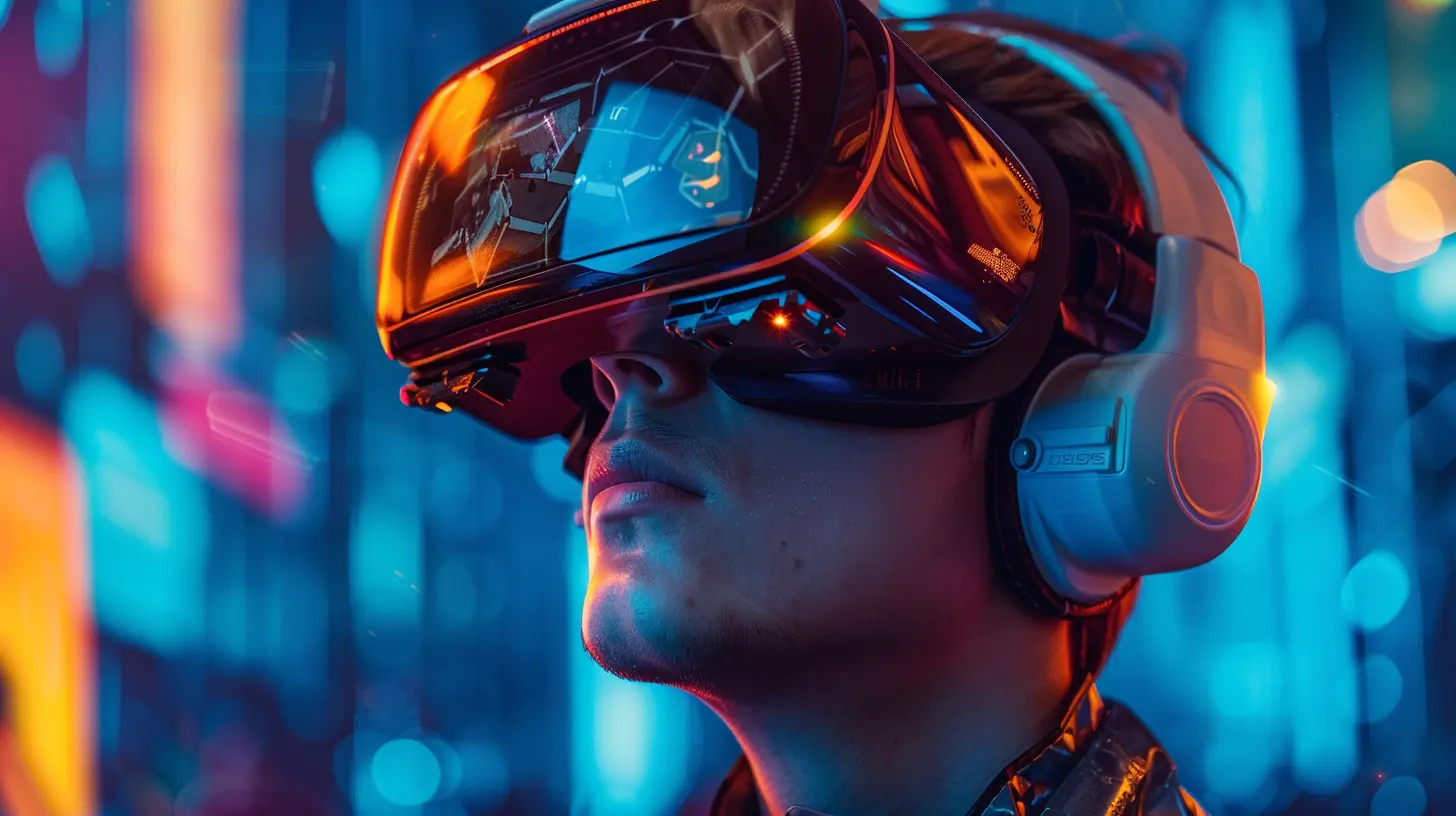
How Games Are Using VR + AR Together
Let’s look at some real examples of how this blend is happening in actual games.1. Location-Based VR/AR Games
Ever heard of VR arcades or theme park rides using mixed-reality tech? These places combine VR headsets with real-world movement and tactile sensations. You might walk through a haunted house set while your headset overlays digital ghosts and monsters.Some setups even use props you can hold — a plastic gun becomes a high-tech rifle in the game. That's AR-meets-VR in action.
2. Gaming With Mixed Reality Headsets (Like Magic Leap and Microsoft HoloLens)
These devices blur the line between virtual and real. You could be fighting off alien invaders who burst through your actual walls. Imagine looking at your coffee table and seeing a tiny battlefield unfold on it. Unreal, right?These MR headsets are trying to do both: immerse you like VR, but keep you aware and involved in your actual environment like AR.
3. Enhanced Multiplayer Experiences
One of the most mind-blowing uses of AR and VR together is in social and multiplayer games. You and your friends could be in the same physical room, each wearing a headset. But in the game, you’re knights or cyborgs battling orcs or solving puzzles. You can see each other's avatars, interact, and even high-five in-game.This combo boosts cooperation, communication, and just plain fun.
The Tech Behind the Magic
Now, let’s geek out a little (just a little). The fusion of VR and AR wouldn’t be possible without some serious tech muscle.1. Spatial Tracking
This is the tech that tracks your movements in real space — walking, turning, jumping, flailing (yes, we’ve all flailed in VR). It’s what makes sure the game world matches your physical actions. Put simply: if you duck in real life, your in-game character ducks too.2. SLAM (Simultaneous Localization and Mapping)
SLAM is a key technology in AR. It helps a device understand the layout of a real environment. This allows virtual elements to interact with the real world in realistic ways, like bouncing a digital ball off a real wall.SLAM is now being used in headsets that combine VR and AR, making the blend seamless.
3. 5G and Cloud Gaming
Faster internet = better, smoother gaming. With 5G and cloud computing, games can stream ultra-rich environments without needing to store them on your device. That means AR/VR games can be more detailed and responsive than ever.The Impact on Game Design
Let’s talk about how this combo is throwing traditional game design out the window.1. No More Fixed Screens
Forget sitting in front of a monitor. With VR+AR, your entire room becomes the game. Designers are now thinking in terms of 3D spaces and real-world interaction.One minute you’re solving a riddle written on a digital wall in your bedroom, the next you’re ducking under a virtual trapdoor in your hallway.
2. New Genres Are Emerging
With this technology, brand-new types of games are being born. Think of games that react to your facial expressions or titles that adjust difficulty based on how fast you’re moving in the real world.Genres are no longer defined by perspective (like first-person shooters) but by how they use the space around you.
What This Means for Gamers
Now to the good stuff—what’s in it for us?1. A Deeper Sense of Presence
This combo leads to hyper-immersion. Your brain starts to believe that the virtual elements are part of your actual world. And when your brain buys in? That’s when the magic happens.2. More Physical Engagement
These games get you up and moving. Whether it’s dodging, running, or even dancing — this is gaming that gets your blood pumping. Say goodbye to couch-potato gaming (unless that’s your thing — no judgment).3. A More Social Experience
One of the biggest knocks on VR used to be that it was isolating. But with VR and AR blending together, shared spaces become common. You can see avatars, hear voices, and collaborate on real-time challenges — all while standing next to your buddies in the real world.Challenges Still on the Horizon
Now, we’re not going to pretend everything’s perfect. There are still some obstacles to overcome.1. High Cost of Entry
Mixed reality setups aren’t cheap. Headsets like the Meta Quest Pro or HoloLens can set you back hundreds, if not thousands, of dollars. Not everyone can afford this yet.2. Motion Sickness & Safety
Moving in a virtual space while staying put in the real world can mess with your brain. And let's be honest — nobody wants to slam into a table while dodging a dragon. Developers are working on smarter safety systems, but it's still a concern.3. Content Creation Limitations
Designing games that merge VR and AR effectively is tough. It takes tools, talent, and time. We’re still in the early days, so expect some growing pains.The Future Looks Wild
Here’s the exciting part: we’ve only scratched the surface.In the next few years, we could see a surge of:
- Fully immersive role-playing games where your home transforms into castles, forests, or underwater realms.
- Fitness games that turn your everyday workout into a fantasy adventure.
- Educational games that bring history, science, and art to life in your living room.
And with AI and eye-tracking tech improving fast, your games will know how you're feeling, where you’re looking, and what you might want to do next — and respond in real time. Wild, right?
Final Thoughts
The intersection of VR and AR in gaming isn’t just a trend — it’s a game-changing revolution. We're witnessing the birth of an entirely new form of interactive entertainment. It’s no longer just about better graphics or faster processors — it’s about bending reality to create experiences that were once only possible in our imaginations.Whether you're a hardcore gamer, a casual player, or someone just curious about what’s next, keep an eye on this space. The lines between real and virtual are blurring, and it’s going to be one heck of a ride.
So grab your gear, find some friends, and step into the future of gaming — where the world around you is just the beginning.
all images in this post were generated using AI tools
Category:
Vr TechnologyAuthor:

Tina Fisher
Discussion
rate this article
1 comments
Selina Holland
VR and AR are like the ultimate gaming power couple—mixing realities to create experiences that are as immersive as my coffee addiction. Can’t wait to see more sparks fly!
September 12, 2025 at 4:26 PM

Tina Fisher
Thanks for the great analogy! The fusion of VR and AR truly does spark innovative experiences in gaming, and I’m excited to see how it evolves!

